How to Train Your Eyes to Spot Morels (Photo Essay)
I decided to write a photo essay with variously camouflaged morels from the southeastern woodlands. I’ve also written a couple other tutorials on morel hunting which you can find here:
When I first became interested in morel hunting I spent some time on Google images trying to burn their odd shape into my mind so I’d have an easy time spotting them on forays. Tradd Cotter of Mushroom Mountain also recommends looking at honeycomb patterns before you set out.
CLICK ON PHOTOS FOR LARGER IMAGES.

Photo Caption: Just looking at the morels themselves can be very helpful. These are specimens of Morchella esculenta and Morchella deliciosa. Harvested 4/12/2010
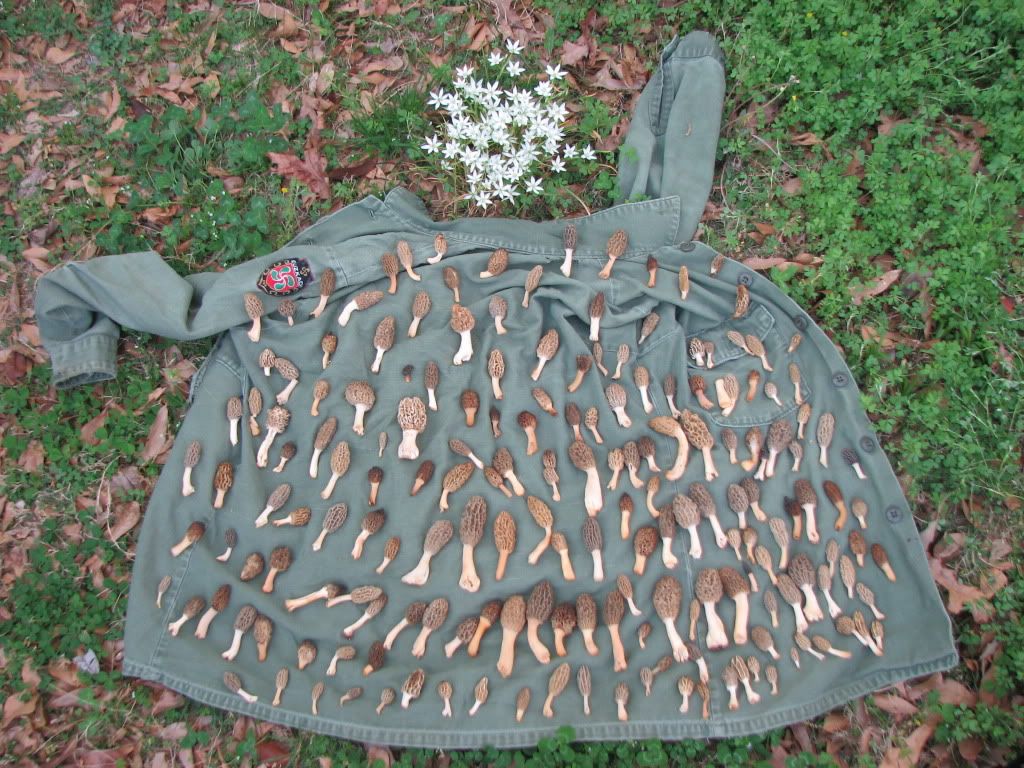
Photo Caption: Tulip morels, blonde morels, yellow morels, white morels, and giant morels are some of the common names used for the mushrooms in this photograph. Online and printed guides even disagree over which ones are Morchella deliciosa and which are Morchella esculenta. Harvested 4/11/2010

Photo Caption: Even with their distinctive shape it is amazing how well they can camouflage. This large morel's colors blend almost seamlessly with beech leaves.
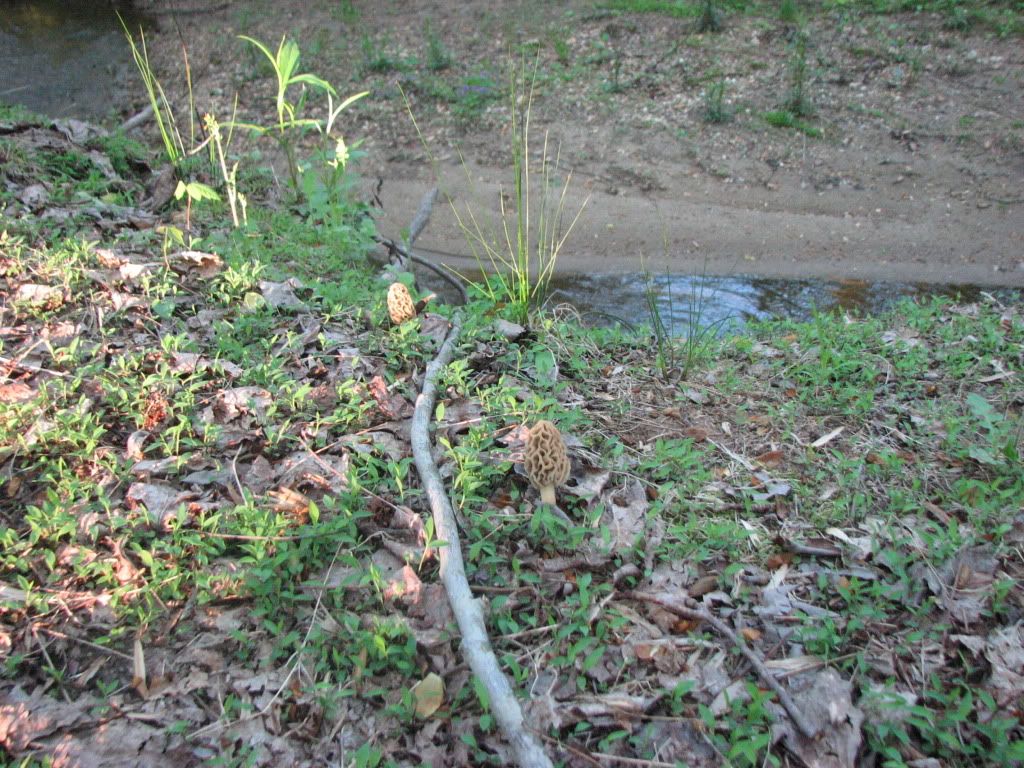
Photo Caption: Morels show up better if their pale stem is above the leaf litter. Larger specimens are often more common along stream banks while smaller tulip morels can be scattered in the woodlands as much as 60' away from a running water source.

Photo Caption: Morels don't need a horizontal surface to grow. They're happy sprouting right out of the vertical walls of a creek bank. Be sure to look down!
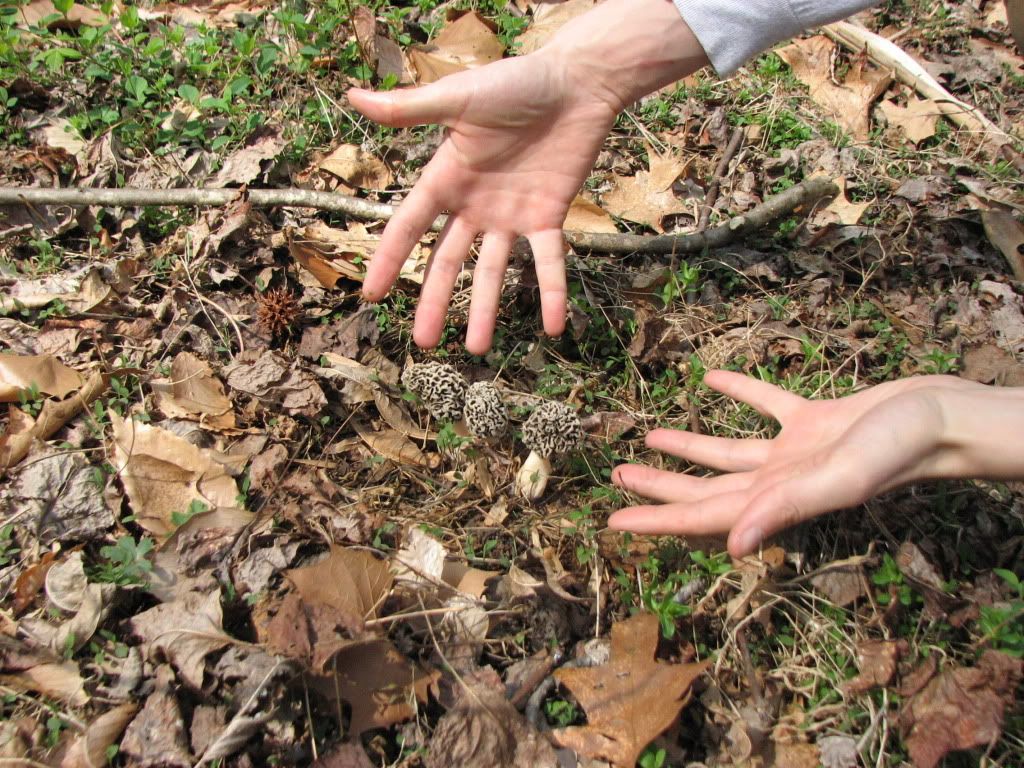
Photo Caption: Sometimes morels make it easy for hunters by growing in larger clusters instead of solo.

Photo Caption: Morels can grow on the roots of any tree (in this case a sweetgum - Liquidambar styraciflua), but there is almost always a large tulip tree (Liriodendron tulipifera) nearby. Also, morels have a regular habit of growing on the downstream side of large tulip trees.
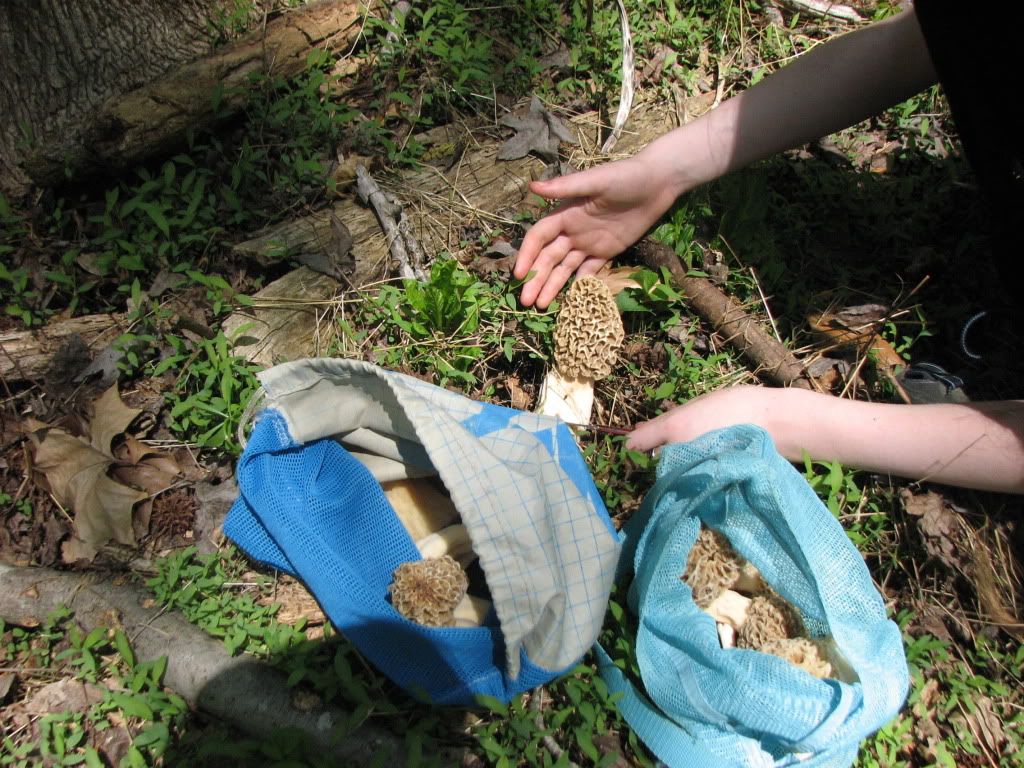
Photo Caption: Large morels are usually easy to spot but they can still hide if they come up beneath a fern or shrub, if they have begun to dry out and discolor, or if they are wearing leaf "hats."

Photo Caption: Look underneath and inside plants while you are hunting, sometimes they conceal a morel.
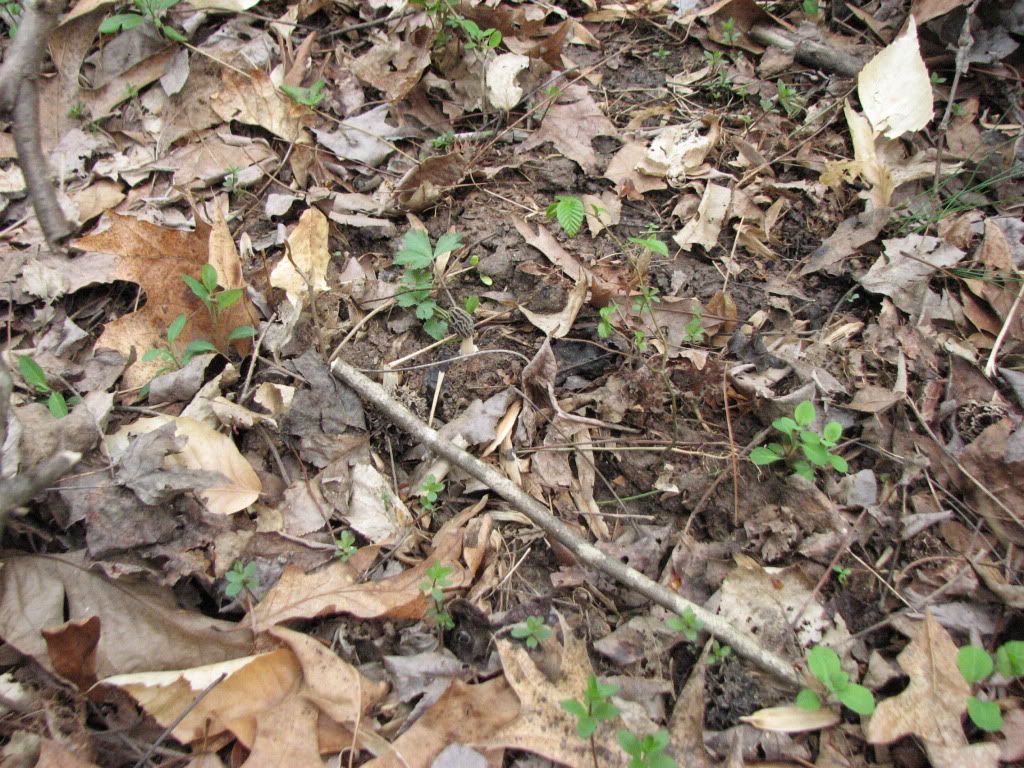
Photo Caption: Can you see this one? Smaller tulip morels can have gray to tan caps and blend very well with the forest floor. They reach about 3" in height and tend to grow in rings around large tulip trees (Liriodendron tulipifera).
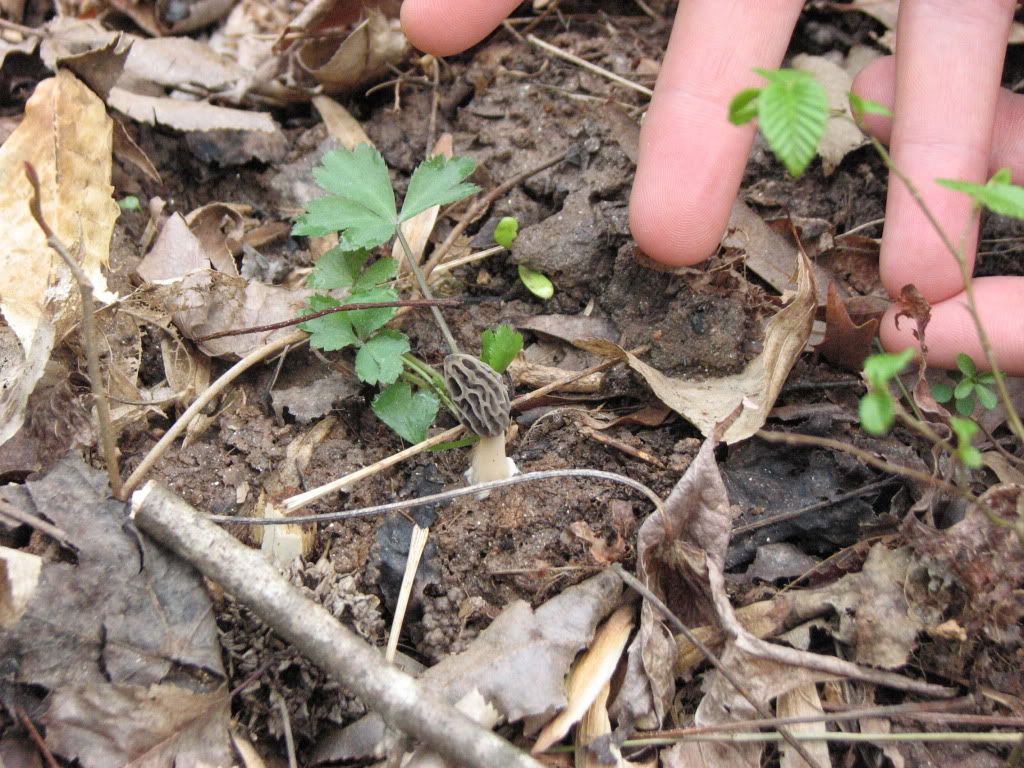
Photo Caption: If you couldn't find it, here it is. This is a small specimen on the cooler north-facing bank of the creek. Check the south-facing banks for warm, faster growing mushrooms first and come back a week later to harvest the slow ones on the opposite side.

Photo Caption: Here's another tough one. It often helps to look behind you as you move along because some morels can be seen from one angle but not another.

Photo Caption: Here's a close-up of the bent morel from the last image. Once you spot your first one, crouch down and scan close to the ground in concentric circles to see if you can find a line of them. Then look for the nearest large tulip tree (Liriodendron tulipifera) and make your way around it at the same radius from the trunk where you found your first mushrooms. You'll likely harvest a ring all the way around the tree.

Photo Caption: It's like a fungal "Where's Waldo?" game! If you find thin logs in a presumed morel ring you can try lifting it to see if you uncover any morels. Be careful stirring up leaf litter to find them -- sometimes you can make it worse by covering them up!
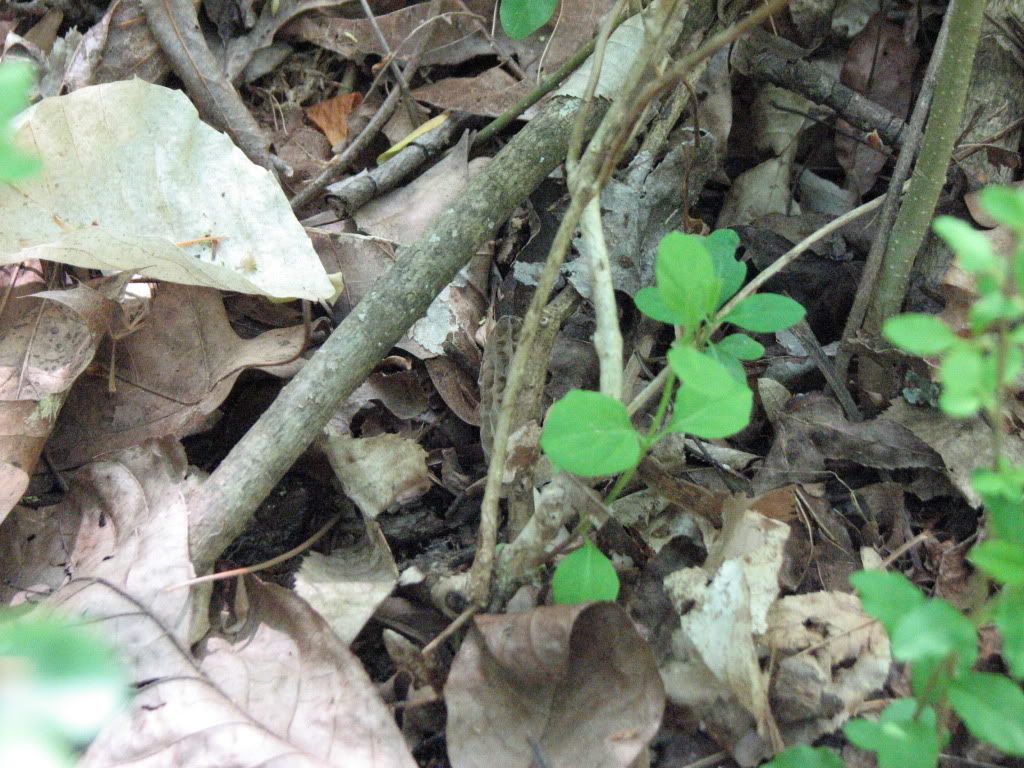
Photo Caption: Another close-up -- they won't all be this well hidden! Once you've found some of the more exposed morels in a tree ring you'll know the camouflaged ones are nearby. This one is hard to see even in a close-up but it is in the center of the photo under the twig.
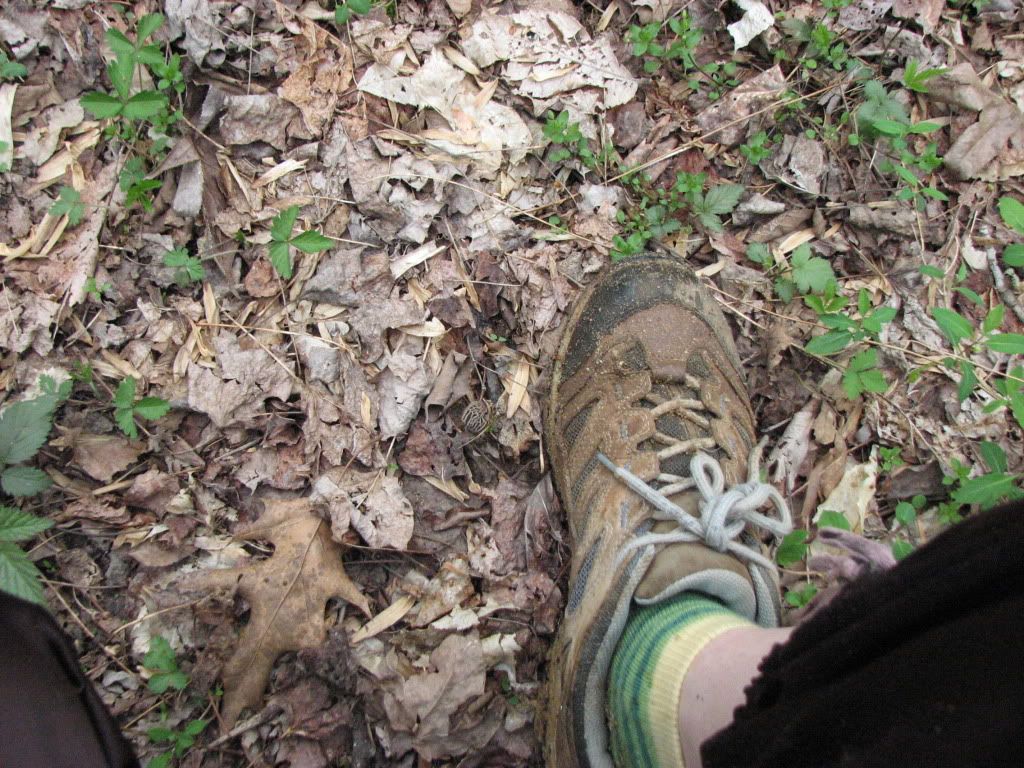
Photo Caption: You won't believe how many times you nearly (or actually do) step on one. Look for distorted caps which change the shape of the morel -- often caused by hot weather drying them out. Morels look more succulent and easy to spot after a rain.
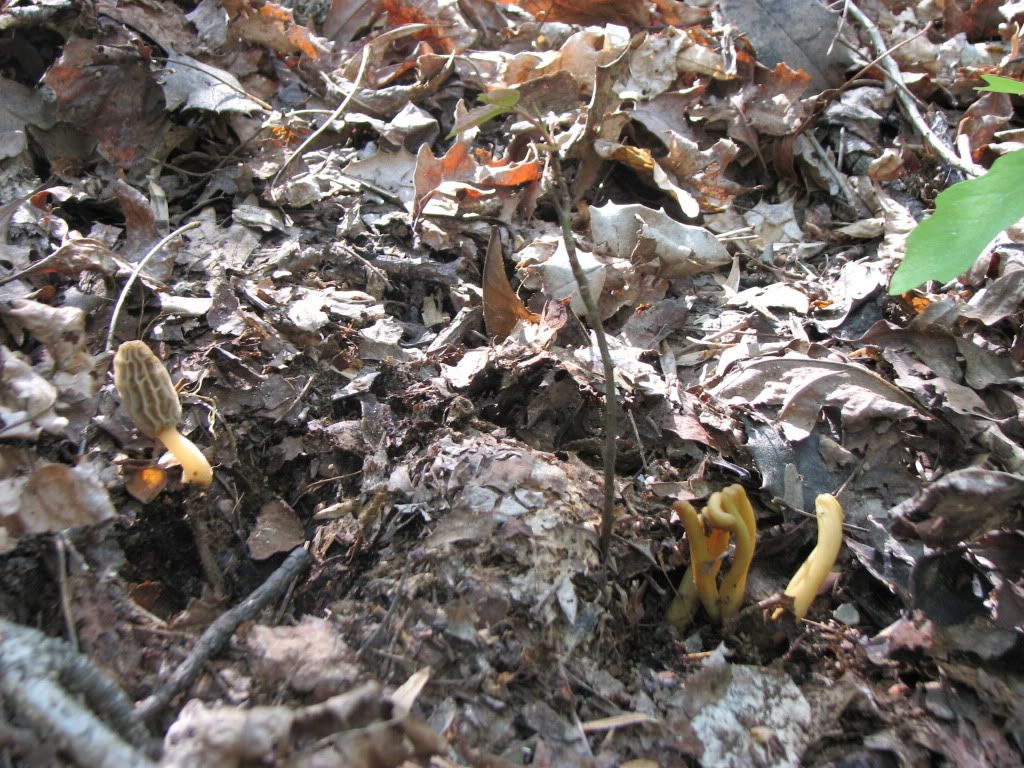
Photo Caption: Watch out for other species of mushrooms in the same patch as your morels. The ones to the right are some type of club fungi. Even though the morel on the left is small, it is easier to see with its pale stem exposed. Sometimes the stems turn orange or brown.

Photo Caption: Can you spot the morel among the sweetgum balls in this photo? Once that honeycomb pattern is ingrained in your mind anything similar will distract you. But after a full day of morel hunting you'll even be able to see imaginary ones when you go home and close your eyes.

Photo Caption: This is a close-up of the last photo with graying sweetgum balls and a morel. Be careful not to get dismissive of possible morels when walking underneath sweetgum trees.
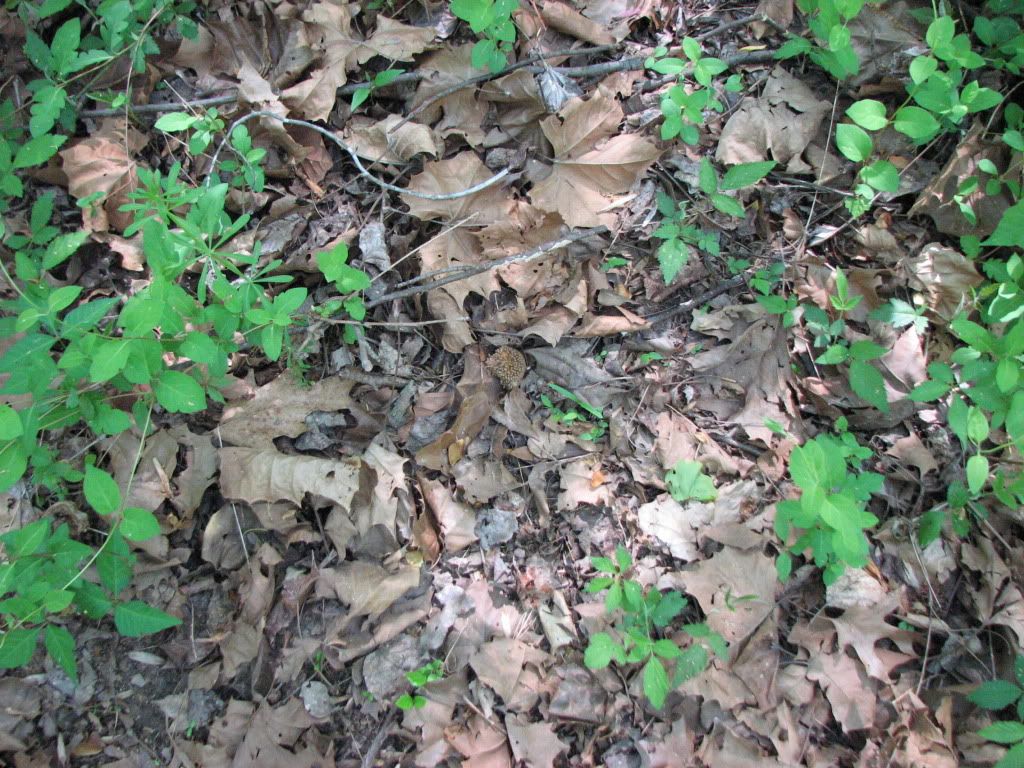
Photo Caption: Do you think you see a morel in this picture? Other forest debris can fool you and make your eyes tired. Sycamore seed heads sometimes look like nice little blonde morels.
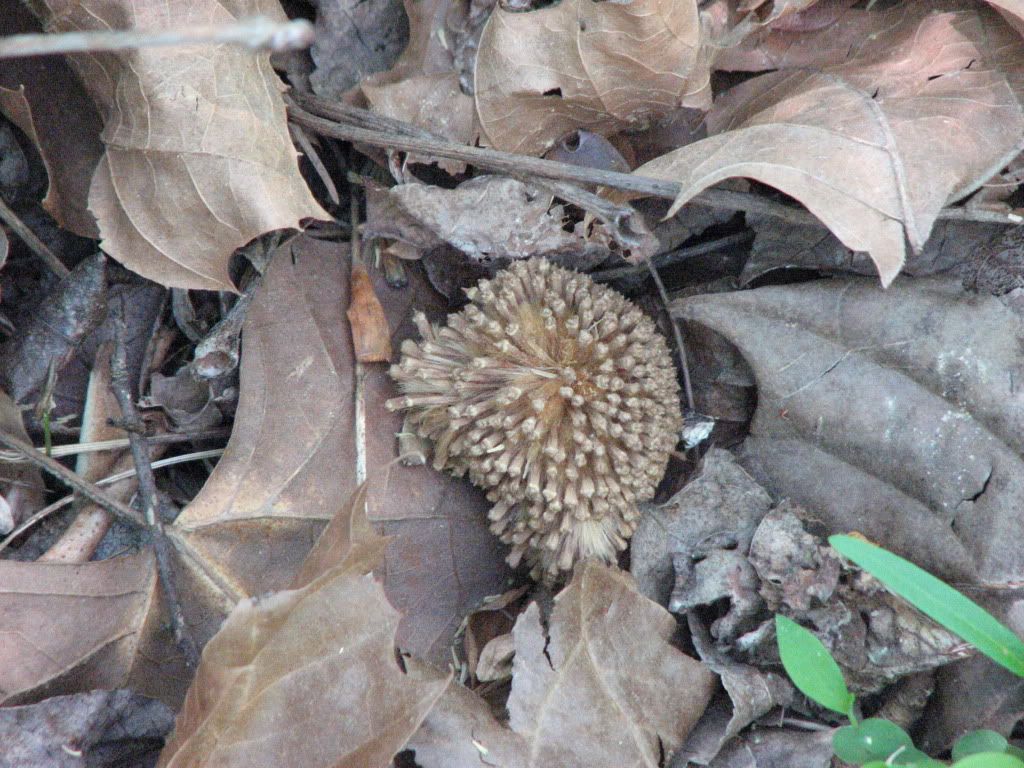
Photo Caption: Here's a close-up of the sycamore seed pod. The way it is disintegrating gives it the illusion of a blonde morel with a pale stem.
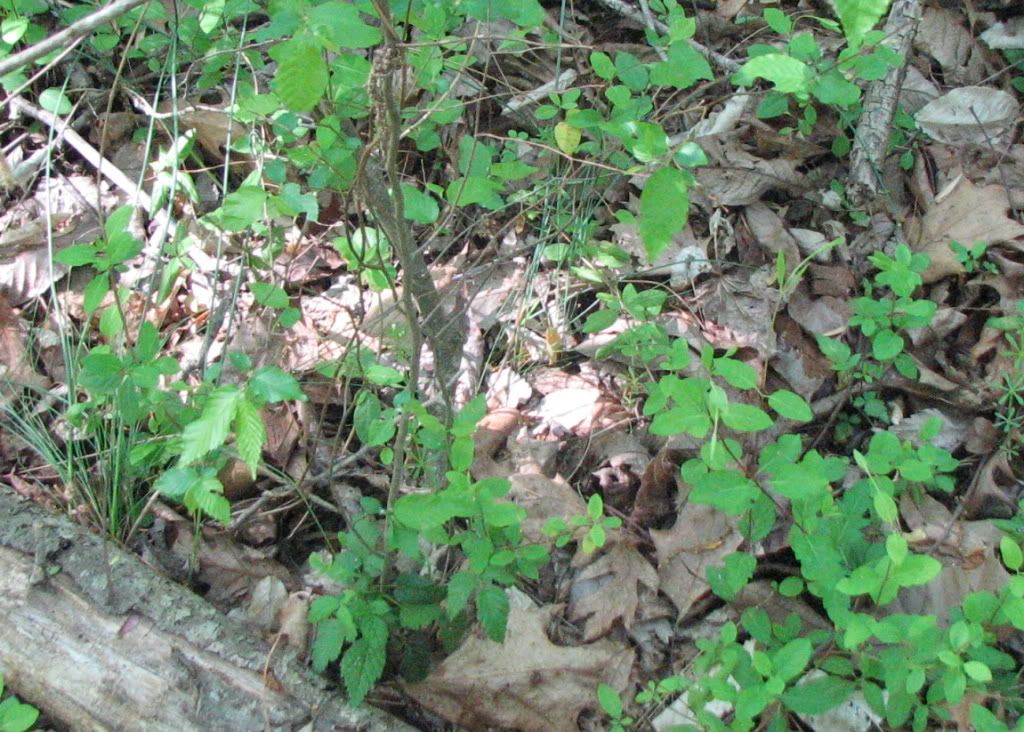
Photo Caption: Lighting can also help, especially late in the day. Back-lit morels can light up making them easier to see.

Photo Caption: But a close-up of this back-lit "morel" reveals that it is only a remnant of an opening tulip tree bud. It's amazing how well morels manage to blend in on the forest floors underneath tulip trees (Liriodendron tulipifera), sweetgum (Liquidambar styraciflua), American beech (Fagus grandifolia), and American sycamore (Platanus occidentalis) where they usually grow.
This is not intended as a morel identification guide, please use appropriate detailed guides with keys. You can read more about how to locate and cook morels here.
14 thoughts on “How to Train Your Eyes to Spot Morels (Photo Essay)”
Comments are closed.

Pingback: How to Find Edible Morel Mushrooms (With Recipes) | Appalachian Feet
Curbstone Valley Farm - April 16, 2010 5:42 pm
I’m usually pretty good at spotting mushrooms. Even managed to notice the black trumpet chanterelles this winter against their cryptic background. Search as I have though, alas, no morels here yet this year. But, I’ll keep trying!
.-= Curbstone Valley Farm´s last blog ..Feathers, Fluff, and Feet =-.
Sustainahillbilly
Twitter: appalachianfeet
- April 30, 2010 10:59 am
I haven’t found black trumpets yet but I’m looking forward to it. I have heard great things about their flavor! I’m sorry about your morel woes.
.-= Sustainahillbilly´s last blog ..How to Identify Eastern and Forest Tent Caterpillars =-.
Kirsten - April 17, 2010 7:09 am
Excellent photo essay. We tried yesterday and didn’t find anything. Those sweet gum balls, when they’ve turned completely gray and started degrading, look just like the honeycomb pattern we were looking for, as did a turtle, pine cones, and lacy, rotting leaves. Hats off to you! I think it has A LOT to do with how you can find four leaf clovers though. You were made for this.
Sustainahillbilly
Twitter: appalachianfeet
- April 30, 2010 11:04 am
I just found 3 morels right outside the entrance to the Caesar’s Head State Park visitor’s center. There is no running water or tulip tree nearby. In this case they seem to prefer sidewalk and a newspaper bin.
Also, we saw fresh morels being sold for $40 a pound at Whole Foods last night.
.-= Sustainahillbilly´s last blog ..How to Identify Eastern and Forest Tent Caterpillars =-.
Jason Riedy - April 19, 2010 8:54 am
This year seems lousy in SW Virginia, too dry. Thanks for adding more eye-training!
.-= Jason Riedy´s last blog ..NaPoWriMo #18 =-.
Sustainahillbilly
Twitter: appalachianfeet
- April 30, 2010 11:09 am
I think it is too dry here too and our somewhat rabid persistence paid off. Also, I just found some morels 2 days ago that broke all the rules. You just never know.
.-= Sustainahillbilly´s last blog ..How to Identify Eastern and Forest Tent Caterpillars =-.
Kelly@LifeOutOfDoors - April 26, 2010 9:22 pm
Good to know. I’m still super scared of all mushrooms – I guess it was one too many warnings by my mom about the poisonous ones. I’ll keep my eyes peeled!
.-= Kelly@LifeOutOfDoors´s last blog ..Violets: Weeds or Wonderful? =-.
Sustainahillbilly
Twitter: appalachianfeet
- April 30, 2010 11:16 am
Fungiphobia is pretty common… and definitely safer than sorry! I waited until I made friends with mycologists and expert hobbyists before I actually tasted anything wild so I completely understand!
.-= Sustainahillbilly´s last blog ..How to Identify Eastern and Forest Tent Caterpillars =-.
kathryn - April 28, 2010 12:28 am
gosh, I used to collect mushrooms in the north of Europe and also some in Australia, but I have never seen one quite like this. what do they taste like? What do you do with these? They look…revolting! ;D
Sustainahillbilly
Twitter: appalachianfeet
- April 30, 2010 11:17 am
I think they taste like a combination of fish and caramelized Parmesan cheese. It’s yummy! I agree that their looks take some getting used to…
.-= Sustainahillbilly´s last blog ..How to Identify Eastern and Forest Tent Caterpillars =-.
Pingback: How to Find Great Plants, Issue #4 | Appalachian Feet
Pingback: How to Follow Morel Ettiquette (and Find Morels) | Appalachian Feet
Pingback: News: Eliza on TV, Upcoming Events, and Our Favorite “How To” Articles | Appalachian Feet